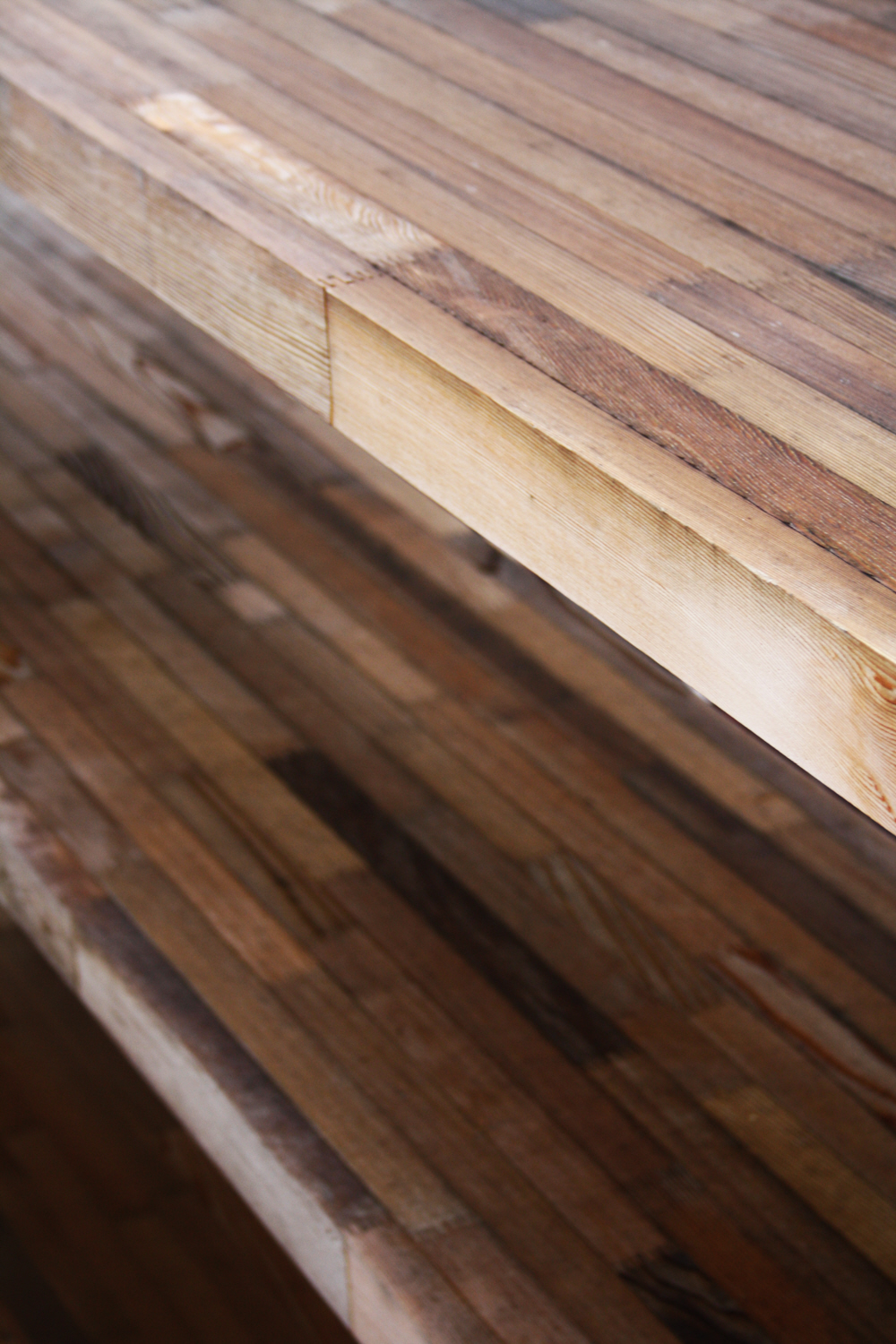The Properties of Cedar Wood
Image: Red cedar (image supplied by Simons Group - see Cheshire Oaks: Marks and Spencer).
Contents |
Introduction
Cedar is a type of coniferous wood, meaning that it is classified as a softwood and its cones/needles remain all year round. Cedar trees fall under the Cedrus genus and the Pinaceae family, which is the family of trees that is coniferous.
Only a couple of species of Cedrus exist in the world, but they exhibit certain traits that make them very popular.
Locations of Cedar
Cedar is particularly common in the western Himalayas and areas that surround the Mediterranean Sea. According to botanists, there are four types of cedar:
- Cedrus deodara – The deodar cedar – Western Himalaya.
- Cedrus libani – The Lebanon cedar – Lebanon and Turkey.
- Cedrus brevifolia – The Cyprus cedar - Cyprus.
- Cedrus altantica – The Atlas cedar – Morocco and Algeria.
These are the natural locations of the different species of cedar, but not the only places they can be found. In fact, the cultivation of cedars around the world has been very successful. Cedars can now be found around the entire Mediterranean region, western Europe, Australia, New Zealand, and North America.
Description of Cedar
Cedars are naturally found at high altitudes; over 1,500m in the Himalayas, and 1,000m in the Mediterranean.
Compared to a tree within the same family, such as pine, cedars are generally quite small. They typically grow to around 35m, but larger in some circumstances. They have a natural spicy scent, thick bark, and broad branches. The leaves of a cedar are needle-like and can grow up to 6cm long.
Uses of Cedar
Cedar wood and cedar oil are natural moth repellents, which is why cedar is commonly used for creating modern-day hope chests and closets that contain woollen clothes.
There are some types of cedar located in North America that are lightweight but also durable and highly stable. Because of this, it is used as wood shingles, which are tapered pieces of wood that clad roofs and walls to protect them from harsh weather.
Various types of cedar have a beautiful colour associated with them, but they are also resistant to warping and cracking, making them perfect for musical instruments. Instruments such as Spanish classical guitars and occasionally steel string guitars are made from cedar, however the type of cedar that is used is known as Western Red Cedar, which isn't a true cedar, such as the ones aforementioned.
Because of its resistance to warping, cedar can also be used for interior panelling in rooms around the house.
--G&S Specialist Timber 12:01, 13 Mar 2017 (BST)
Related articles on Designing Buildings Wiki
- 11 things you didn't know about wood.
- Aurora Log Homes.
- Bamboo.
- Bordeaux Law Courts.
- Cheshire Oaks: Marks and Spencer.
- Chip carving.
- CIBSE Case Study Olympic Velodrome.
- Cross-laminated timber.
- Definition of tree for planning purposes.
- Engineered bamboo.
- European Union Timber Regulation.
- Forest Stewardship Council.
- Natural materials.
- Pine wood.
- Pine leaves.
- Plywood.
- Programme for the Endorsement of Forest Certification.
- Scunthorpe Sports Academy.
- Shingles.
- Softwood.
- The Scientific Properties of Wood.
- Timber.
- Timber preservation.
- Timber vs wood.
- Tree preservation order.
- Tree rights.
- Types of timber.
- Walnut.
- Best Woods for Wood Carving
- Physical Properties of Wood
- The Differences Between Hardwood and Softwood
Featured articles and news
Homes England creates largest housing-led site in the North
Successful, 34 hectare land acquisition with the residential allocation now completed.
Scottish apprenticeship training proposals
General support although better accountability and transparency is sought.
The history of building regulations
A story of belated action in response to crisis.
Moisture, fire safety and emerging trends in living walls
How wet is your wall?
Current policy explained and newly published consultation by the UK and Welsh Governments.
British architecture 1919–39. Book review.
Conservation of listed prefabs in Moseley.
Energy industry calls for urgent reform.
Heritage staff wellbeing at work survey.
A five minute introduction.
50th Golden anniversary ECA Edmundson apprentice award
Showcasing the very best electrotechnical and engineering services for half a century.
Welsh government consults on HRBs and reg changes
Seeking feedback on a new regulatory regime and a broad range of issues.
CIOB Client Guide (2nd edition) March 2025
Free download covering statutory dutyholder roles under the Building Safety Act and much more.
Minister quizzed, as responsibility transfers to MHCLG and BSR publishes new building control guidance.
UK environmental regulations reform 2025
Amid wider new approaches to ensure regulators and regulation support growth.
BSRIA Statutory Compliance Inspection Checklist
BG80/2025 now significantly updated to include requirements related to important changes in legislation.


























Comments
Hello,
Just wanted to let you all know that you have a picture of Red Cedar on this page, then your description of cedars mentions only the genus Cedrus, of which Red Cedar is not a member. Red cedar is not a "true" Cedar and is not in fact even in the pineceae family. It is in the Cupressaceae or "Cypress" family where most trees North Americans consider to be "Cedar" reside. I'm curious, where does "Cedar" lumber in North America come from? Which tree? North America has no native or naturalized true cedars so is wood here marked "Cedar" all Juniper? That is the answer I was looking for when I came to this site, it seems hard to find online.
Dylan Linet
[email protected]
Thank you for your observation. We suggest you contact the original author of this article, G&S Specialist timber. Please refer to their profile page (found here: G&S Specialist Timber) for contact information.
Editor, Designing Buildings Wiki